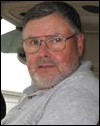|

|
MOAs and Restricted
Areas are two types of special use airspace. And probably no
other airspace types cause more confusion among pilots,
especially those who are candidates at a checkride.
A MOA (Military
Operations Area) is an airspace where there may be a higher
than normal concentration of military aircraft flying
around. The difference between a MOA and a Restricted Area
is that in a MOA the military aircraft are just flying
around practicing formation flight, intercepts, and the
like, but they are NOT shooting guns or dropping bombs. In
contrast, a Restricted Area often encompasses a gunnery
range and/or a bombing practice area. Dangerous stuff goes
on in a Restricted Area. That's why you don't need to call
anybody to fly through a MOA, but you have to call about a
Restricted Area. In real world operations, however, it is a
good idea to check the status of a MOA before entry. |
|
not in use. You do
that by calling the controlling agency, as shown on the
frequency tab of the sectional chart, and asking if the
Restricted Area in question is in use or not. Controller
jargon for this is "hot" (in use), or "cold" (not in use).
According to a letter from FAA’s Office of Chief Counsel,
“A clearance is not required to operate VFR through a
restricted area when the controlling or using agency, as
applicable, has made a determination that the restricted
area is 'cold'.” The letter further said that when a
Restricted Area is cold, i.e. not in use, it doesn't even
exist. Restricted Areas only exist when they are in use.
Thus, if the restricted area is cold you can fly through it;
if it's hot then go around. It's as simple as that. The
controlling agency does not supply specific permission or a
clearance to enter Restricted Airspace.
While most pilots
understand technically how MOAs and Restricted Areas behave,
as a practical matter they would never think about calling
to see if a Restricted Area is hot. They will always go
around, as if the Restricted Area was actually a Prohibited
Area. This is a very wasteful attitude as most Restricted
Areas are, in fact, in use for only a few hours each day.
The rest of the time you can fly right through if you would
only take 15 seconds or so to make the call to the
controlling agency. Since names and frequencies are
available on sectional charts, calling is a simple
procedure. In addition to the name of the controlling agency
and the frequency, sectional charts also provide information
as to when Restricted Areas may be in use. When you see the
time of use printed on the chart as "continuous" that
doesn't mean the airspace will be in use continuously during
the times indicated. What it really means is that it COULD
be in use during those hours. Odds are that it will NOT be
in use when you call. Flying an extra half-hour out of your
way in order to avoid a 15-second radio call is really
wasteful.
When I'm instructing,
I have my student plan a dual cross-country flight that on a
direct route would take them through a Restricted Area.
While in flight I have them call the controlling agency to
find out if the airspace is in use. Sometimes it is;
sometimes not. In either case the student has learned how
easy it is to call and find out. Center is not just for
heavy iron. For whatever reason, probably because they
weren't properly trained either, many flight instructors
convey to their primary students that calling to see if a
Restricted Area is "hot" is a waste of time. You are going
to get told to stay out. Since in the real world the
opposite is true, those same instructors need to rethink how
they teach this particular bit of information. With the high
prices of AvGas and concurrently rising rental rates, flying
through Restricted Areas that are not in use is becoming an
increasingly attractive alternative. Call and ask.
|